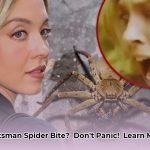Ever wondered about those slender wasps carrying spiders to small mud nests? That’s a dirt dauber, a unique type of wasp distinct from the more commonly feared paper wasps and yellowjackets. This guide explores the world of dirt daubers, comparing them to other wasps and highlighting their identification, behavior, and surprisingly beneficial role in the ecosystem.
Meet the Dirt Dauber
The term “dirt dauber,” sometimes called “mud dauber,” refers to a specific type of wasp known for its solitary lifestyle and remarkable mud-building skills. While they share the name “wasp,” dirt daubers differ significantly from their more social and aggressive relatives.
Appearance: Spotting the Differences
Dirt daubers possess a slender, almost delicate build with a characteristic “thread waist” – a thin segment connecting the thorax and abdomen. This sets them apart from the more robust paper wasps and yellowjackets. Their coloring varies, ranging from a matte black to a striking metallic blue, sometimes with yellow or green markings.
- Dirt Dauber: Slender, thread-waisted; black, metallic blue, or reddish-brown.
- Paper Wasp: More robust; brownish body, dark wings, sometimes with yellow markings.
- Yellow Jacket: Stocky; bright yellow and black stripes.
Habitat and Nesting: Architectural Wonders
Dirt daubers, true to their name, are master mud architects. They construct intricate nests from mud, ranging from simple tubes to elaborate, pot-like structures. These nests are typically found in sheltered locations like under eaves, in sheds, or on walls. This differs dramatically from the papery, open-comb nests of paper wasps or the hidden nests of yellow jackets, which are also made of a papery substance, often located underground or within cavities.
Ongoing research explores the potential influence of mud type on larval development, hinting at a deeper complexity within these seemingly simple nests.
Behavior: Solitary Hunters vs. Social Defenders
Dirt daubers lead solitary lives, primarily focused on hunting spiders to provision their nests. They paralyze spiders with their sting and then place them within the mud chambers of their nests, providing live food for their larvae. This spider-hunting behavior makes them valuable allies in natural pest control.
In contrast, paper wasps and yellowjackets are social insects, living in colonies and fiercely defending their nests. Paper wasps exhibit moderate aggression, while yellow jackets are known for their high aggression and propensity to sting repeatedly.
The Sting: Risk and Reaction
Although capable of stinging, dirt daubers are far less aggressive than other wasps and rarely sting humans unless directly threatened. Their venom, designed to paralyze spiders, is significantly less potent than that of social wasps. A sting from a dirt dauber typically causes mild, localized pain and swelling, similar to a mosquito bite. However, allergic reactions, though uncommon, can occur. Seek immediate medical attention if you experience symptoms of a severe allergic reaction, such as difficulty breathing or throat swelling.
Mud Dauber Nest Removal: A Cautious Approach
If a mud dauber nest is located in a high-traffic area and poses a potential inconvenience, careful removal may be necessary. It’s best to proceed with caution, wearing gloves and avoiding direct contact.
-
Wait for inactivity: Remove the nest at night or during cooler temperatures when the wasps are less active.
-
Protective gear: Wear gloves, long sleeves, and pants.
-
Gentle removal: Carefully scrape the nest away using a tool like a putty knife.
Comparison Table: Dirt Dauber vs. Other Wasps
| Feature | Mud Dauber | Paper Wasp | Yellow Jacket |
|---|---|---|---|
| Appearance | Slender, thread-waisted | Robust, brownish, sometimes yellow | Stocky, yellow and black stripes |
| Nest | Mud tubes, clumps, or pipes | Open-comb, papery | Enclosed, papery, often hidden |
| Behavior | Solitary, hunts spiders | Social, moderately aggressive | Social, highly aggressive |
| Sting Risk | Low, stings rarely | Moderate | High |
| Venom Potency | Mild | Moderate | High |
The Ecological Role of Dirt Daubers: Unsung Heroes
Dirt daubers play a vital role in the ecosystem by controlling spider populations and contributing to a balanced environment. Their presence can be an indicator of a healthy ecosystem. Ongoing research continues to explore the complexities of their ecological impact and the nuances of their behavior. While much is known, there is still much to discover about these fascinating creatures.
This guide provides a general overview of dirt daubers. Further research may yield additional specific insights into different species and their geographical distribution. Some researchers suggest that climate change might influence insect populations, including dirt daubers, but more studies are needed to fully understand these potential effects.
- Affordable Employee Wellness Fair Ideas for Any Budget - December 14, 2025
- Employee Wellness Programs Strategically Benefit Employee Health And Retention - December 13, 2025
- Health and Wellbeing Companies Driving Employee Engagement and Productivity - December 13, 2025
















